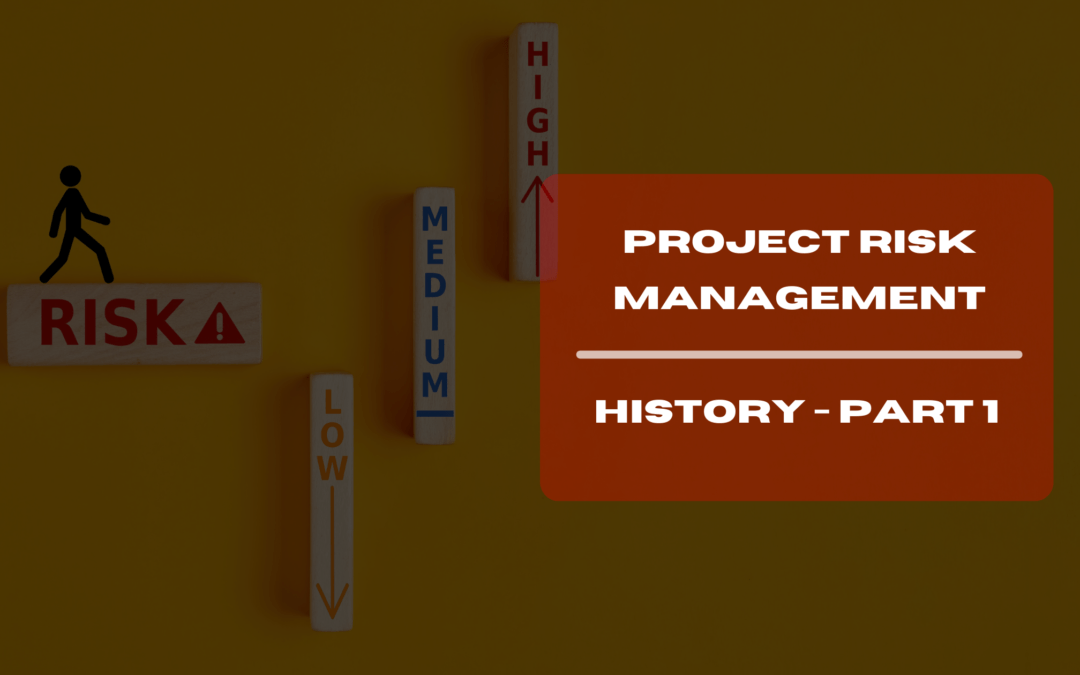A brief history of Project Risk Management: Part 1
In the vast domain of project management, there is a crucial facet that often takes a back seat amid discussions of schedules, budgets, and resource allocation. It is the realm of project risk management, a discipline that, despite its significance, remains somewhat in the shadows. While it’s a well-known fact that risks are inherent in any project, delving into the historical context of risk management in the construction industry provides us with insights that are often overlooked.
Table of Contents
The Early Origins of Risk Management
To understand the roots of project risk management, we must first journey back in time to the cradle of civilization. It is here, in the ancient civilizations of Mesopotamia, Egypt, and the Indus Valley, that some of the earliest forms of construction projects took shape. These ventures included the construction of grand temples, awe-inspiring pyramids, and intricate irrigation systems.
Even in those early days, risk was an ever-present companion to these ambitious endeavors. The builders and architects of antiquity faced challenges like floods, earthquakes, and labor disputes. While they might not have had the sophisticated tools and methodologies we have today, they did possess a keen understanding of the need to anticipate and mitigate risks. These ancient builders relied on their accumulated knowledge and experience to navigate the uncertainties of their projects successfully.
Fast forward a few millennia, and we find that the principles of risk management in construction were still very much alive. The master builders of the Middle Ages, responsible for the towering cathedrals and fortified castles of Europe, were well-acquainted with the unpredictability of their craft. They understood the importance of contingency planning and the need to account for adverse conditions, whether due to environmental factors or unforeseen structural challenges.
The Renaissance and Beyond
As we move into the Renaissance era, we see the emergence of more structured approaches to risk management. Thinkers like Leonardo da Vinci, who applied his boundless curiosity not only to art but also to engineering and construction, contributed to the growing body of knowledge. His meticulous studies of hydraulics, mechanics, and materials were early precursors to systematic risk assessment.
The Age of Exploration brought with it a new set of challenges and risks. As ships set sail to distant lands, explorers and their financiers had to contend with the unknown, including treacherous seas, hostile natives, and uncharted territories. It was during this era that concepts like insurance began to take shape, with merchants and adventurers pooling their resources to spread the risk of costly voyages.
Industrialization and the Modern Era
The industrial revolution of the 18th and 19th centuries transformed the world and with it, the field of construction. Factories, railways, and massive infrastructure projects became emblematic of this era. As projects grew in scale and complexity, so did the need for more sophisticated risk management approaches.
The development of probability theory and statistics in the 17th and 18th centuries laid the foundation for quantitative risk assessment. Mathematicians like Pascal, Fermat, and Laplace advanced our understanding of uncertainty, paving the way for the application of probability in risk analysis.
In part 2 of this article, we will delve deeper into the challenges of project risk management in the construction industry and explore the different models and methodologies that have evolved over time to address these challenges. We’ll uncover how these historical roots have shaped the way we manage risk in construction projects today.
But for now, let us remember that the practice of risk management in construction is not a recent innovation but rather a timeless discipline that has evolved alongside human ambition and ingenuity.
Stay tuned for Part 2, where we delve into the Challenges in Project Risk Management in construction, the different models to assess Construction Project Risks, and the various Methodologies of Risk Management and their evolutionary significance.
In the meantime, if you’re interested in exploring the history of risk management in a broader financial context, you can read this informative article: The History of Risk Management: 30 Centuries of Innovation.
The article highlights key milestones in financial risk management and provides valuable insights into the broader world of risk management throughout history.
Note: In Part 2, we will delve deeper into the subject, including the Models and Methodologies of Risk Management specific to the construction industry.

